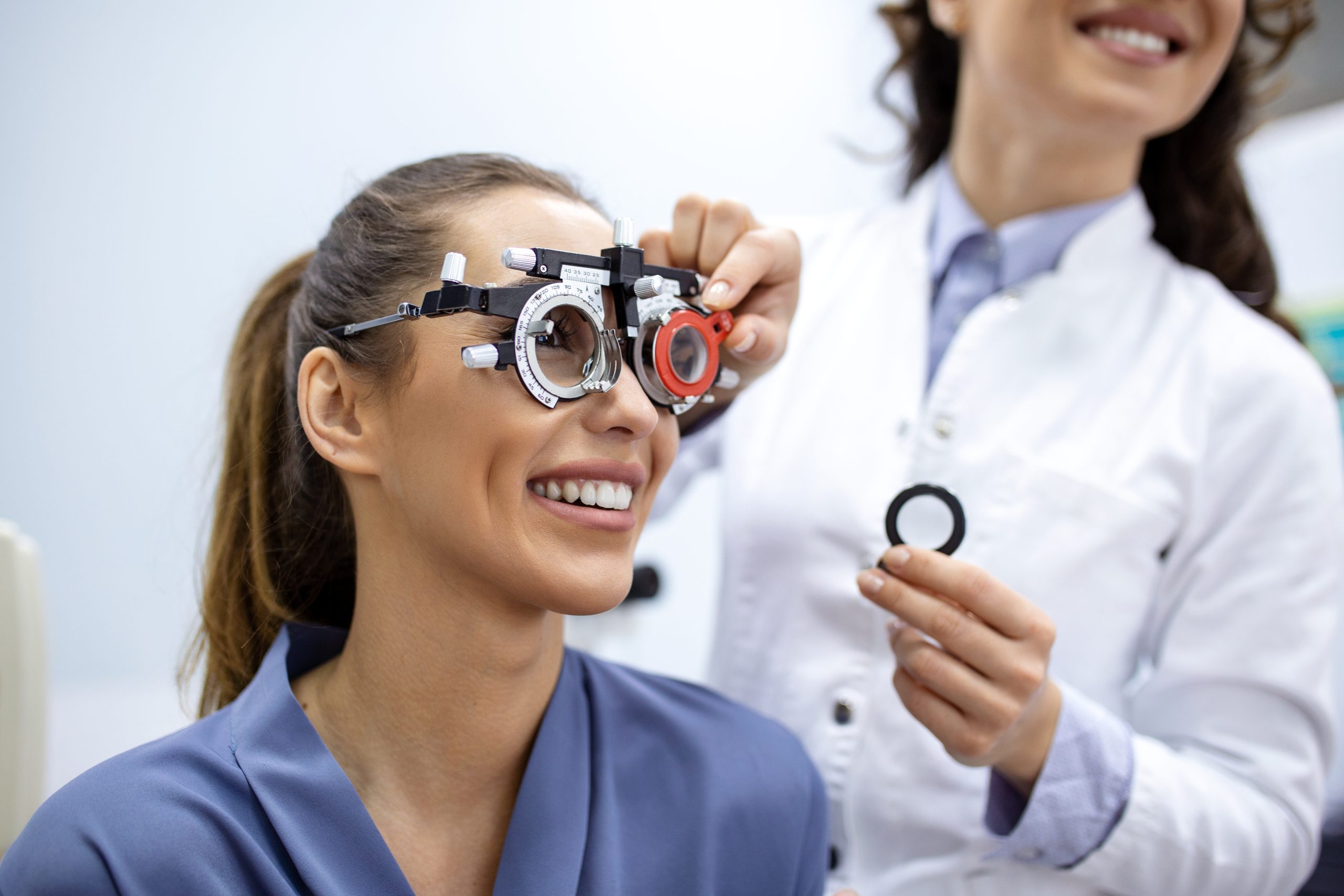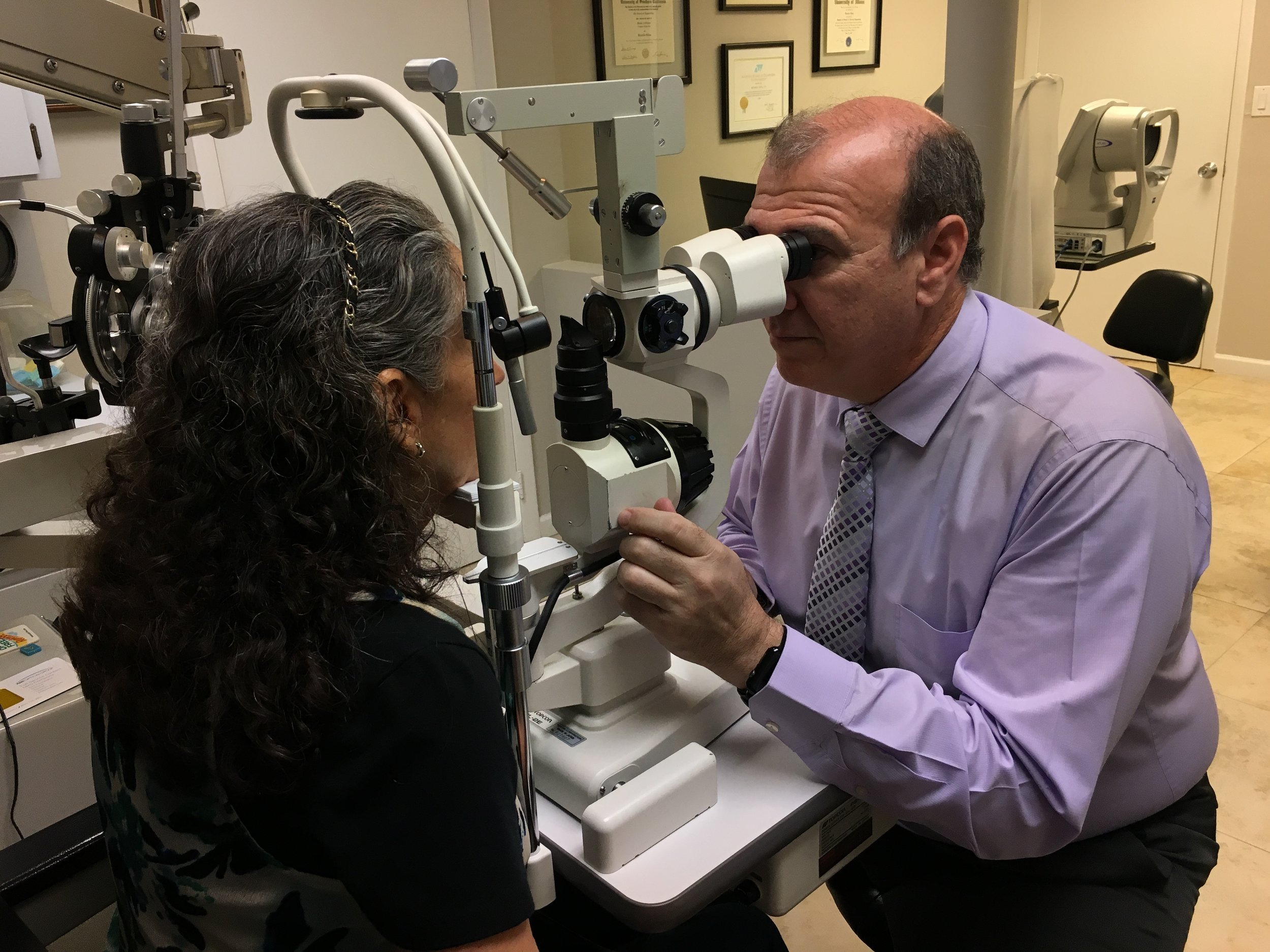Exploring the most recent Technological Advancements in Optometry and What They Mean for Eye Doctors
From the accuracy of Optical Comprehensibility Tomography to the nuanced insights offered by AI-driven diagnostic devices, these innovations are setting new requirements in person assessment and treatment. As these developments permeate the method, eye doctors are encountered with the difficulty of embracing these tools to improve person end results.
Innovations in Diagnostic Tools
Progressing the area of optometry, developments in diagnostic devices have actually reinvented the method eye care specialists examine and identify eye problems and visual problems. The previous decade has actually seen significant technical improvements, enabling even more precise and thorough analyses.
An additional key advancement is the introduction of sophisticated corneal topography systems, which map the surface area curvature of the cornea with precision. These tools are specifically useful for suitable contact lenses and diagnosing corneal conditions. Furthermore, digital retinal imaging has changed traditional ophthalmoscopy, providing in-depth, breathtaking views of the retina that help with detailed visual evaluations.
The advancement of wavefront aberrometry has likewise been critical, making it possible for the analysis of refractive errors with unmatched accuracy (Eye Doctor). This innovation helps in personalizing restorative lenses and boosting surgical end results for refractive surgeries. Collectively, these diagnostic advancements empower optometrists to supply premium person treatment, making certain very early intervention and tailored treatment approaches, inevitably boosting aesthetic health and wellness results
AI in Patient Management
Structure on the structure of innovative diagnostic devices, the unification of fabricated knowledge (AI) in client management stands for a transformative jump for optometry. AI systems are increasingly employed to boost effectiveness, accuracy, and customization in individual care. By analyzing substantial quantities of data, AI can recognize patterns and anticipate prospective eye problems, enabling eye doctors to tailor interventions better. This capability is important in managing persistent eye illness such as glaucoma and diabetic person retinopathy, where very early detection and constant monitoring are vital.
In addition, AI-driven platforms promote streamlined individual interactions and administrative procedures. Automated scheduling, online consultations, and customized follow-up strategies not just improve individual complete satisfaction yet also enhance time monitoring for specialists. These systems can triage individuals based upon the urgency of their conditions, making sure that those in critical requirement get punctual focus.
Additionally, AI improves decision-making by supplying optometrists with evidence-based recommendations and treatment paths. By incorporating information from electronic health documents, AI devices provide understandings that inform scientific choices, lowering the risk of mistakes and boosting person outcomes. As AI continues to develop, its function in individual administration will likely broaden, improving the landscape of optometric treatment.
Breakthroughs in Retinal Imaging
In the world of optometry, retinal imaging has actually observed remarkable technological advancements that are enhancing diagnostic capabilities and patient treatment. Technologies such as Optical Comprehensibility Tomography (OCT) and fundus digital photography have actually reinvented just how eye doctors evaluate the retina and visualize. OCT, particularly, provides high-resolution, cross-sectional pictures of the retina, permitting for the thorough exam of its layers. This ability is vital for early detection and monitoring of problems like glaucoma, diabetic person retinopathy, and age-related macular degeneration.
Enhanced imaging methods like OCT angiography are additional refining analysis precision. This non-invasive strategy maps blood flow in the retina, offering essential understandings into vascular health and wellness without the need for dye shots. Furthermore, flexible optics technology is being incorporated into retinal imaging systems to correct ocular aberrations, delivering unmatched photo quality. Such improvements facilitate the identification of min retinal modifications that can represent illness progression.
Moreover, advancements in man-made knowledge are boosting retinal imaging by enabling automatic evaluation of huge datasets. These systems aid optometrists in identifying patterns a sign of pathology, therefore enhancing diagnostic accuracy and effectiveness. Jointly, these advancements are changing retinal imaging into a keystone of modern-day eye care, enhancing end results and expanding therapeutic possibilities.
Teleoptometry's Growing Role
Teleoptometry is increasingly ending up being a vital element of eye treatment, driven by developments in data and diagnostic devices. As optometry embraces digital transformation, teleoptometry assists in remote consultations, allowing optometrists to extend their solutions past typical borders. This is especially valuable in underserved and country areas where access to specialized eye treatment is usually minimal. By leveraging high-resolution video conferencing and advanced retinal imaging, eye doctors his response can perform detailed eye examinations from afar, ensuring timely medical diagnosis and treatment.
The integration of expert system (AI) further improves teleoptometry, allowing the evaluation of visual data and assisting in the discovery of ocular problems such as glaucoma and diabetic retinopathy. AI-powered formulas can rapidly analyze intricate imaging information, supplying optometrists with useful insights that strengthen medical decision-making.
Moreover, teleoptometry sustains continuity of care via seamless assimilation with electronic wellness records (EHRs), permitting optometrists to preserve comprehensive individual histories. This makes sure that patients get consistent and individualized care even when talking to various practitioners.
Despite these advantages, difficulties continue to be, consisting of ensuring data protection and taking care of patient expectations. Nonetheless, teleoptometry stands for a significant stride in the direction of even more available, efficient, and patient-centered eye care. As innovation progresses, its role is positioned to broaden additionally.

Future Patterns in Eye Treatment
A myriad of cutting-edge fads is readied to improve the future of eye treatment, driven by technical developments and the progressing requirements of people. One considerable pattern is the combination of expert system (AI) in diagnostics, which assures to boost the accuracy and efficiency of eye examinations. AI algorithms can analyze large amounts of data from retinal pictures, potentially spotting problems like diabetic person retinopathy and glaucoma earlier than typical approaches.
In addition, customized medicine is obtaining grip in optometry, with hereditary screening informing customized treatment strategies. This method aims to optimize person results by customizing treatments to individual genetic profiles. Wearable innovation, such as wise contact lenses, is additionally coming up, providing pop over here real-time tracking of intraocular pressure or sugar levels, thus giving constant understandings right into systemic and eye health.
The fostering of increased fact (AR) and digital truth (VIRTUAL REALITY) in training and patient education and learning is one more emerging trend. These innovations offer immersive experiences that can boost understanding and skills both for clients and eye doctors. As these trends progress, eye doctors should remain abreast of technological improvements to provide innovative treatment, guaranteeing enhanced person outcomes and contentment in the dynamic landscape of eye care.
Final Thought

Collectively, these diagnostic innovations encourage optometrists to deliver premium person care, ensuring very early intervention and tailored treatment techniques, inevitably enhancing aesthetic health and wellness outcomes.

As these innovations proceed to develop, eye doctors have to adapt and integrate them right into technique, ultimately enhancing operations efficiency and raising the requirement of eye treatment delivered to clients.
Comments on “Find a Trusted Optometrist Chino for Household Eye Care Solutions”